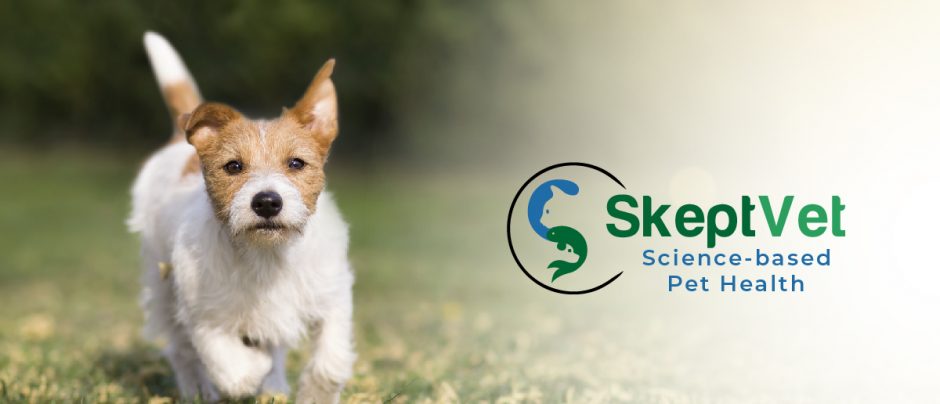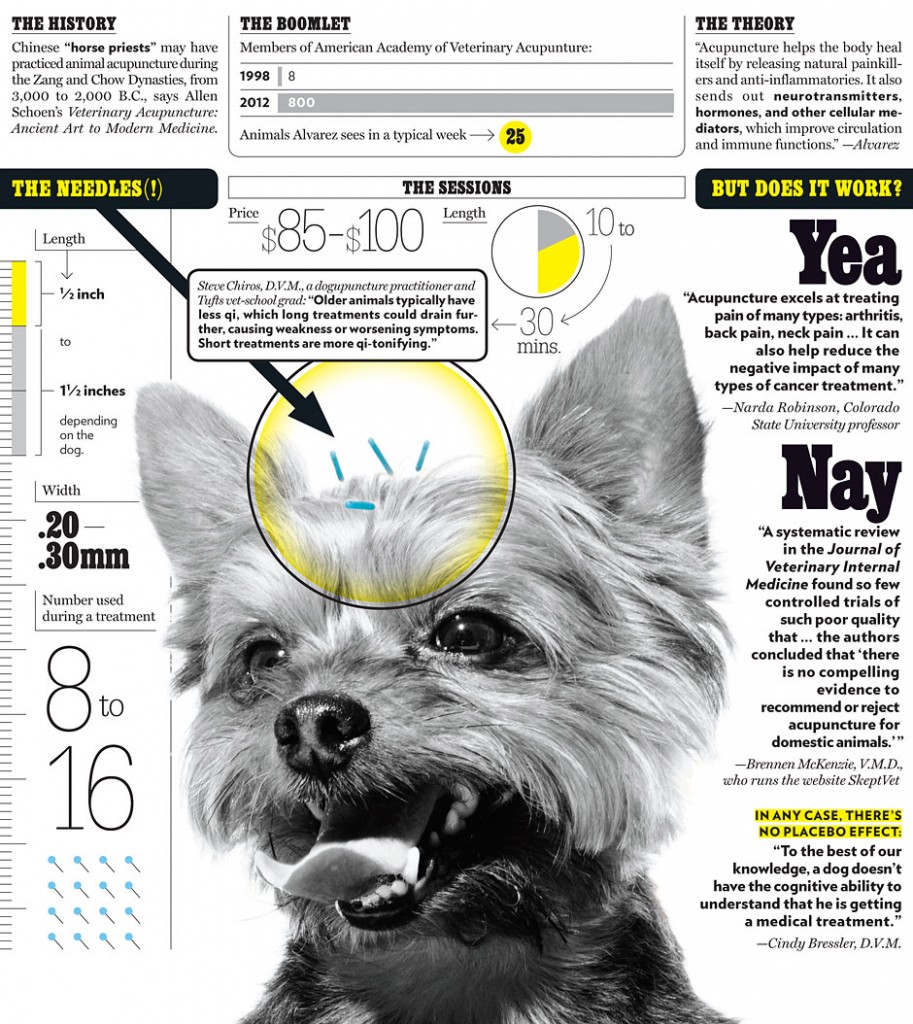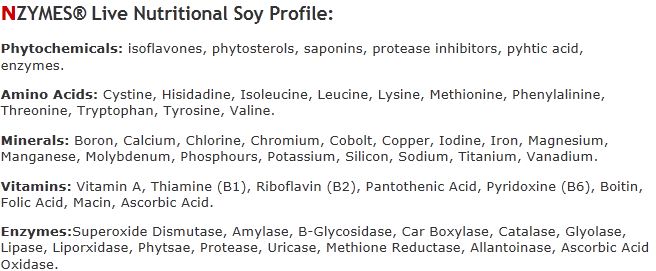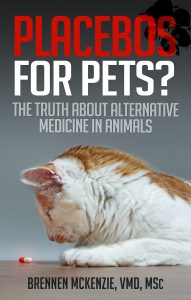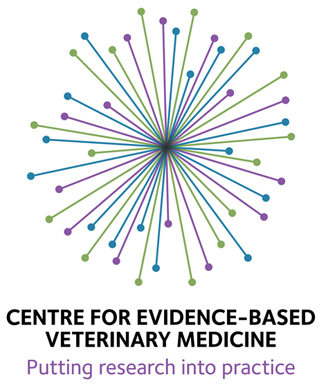This is a great time to be a pet owner. Advances in nutrition and veterinary medicine in the last few decades have led to tremendous improvement in the length and quality of our pets’ lives. We have more and better options for preventing and treating illness in our animal companions than ever before. And apart from professional medical care, there is a staggering variety of healthcare products available for our pets.
But there is a downside to this abundance of choices. We are stuck trying to figure out which products might help our pets, which might do nothing for them, and which might even be dangerous. The government does little to monitor the veterinary market or to require that individuals or companies selling products demonstrate they are safe and effective or that the marketing claims they make are true. And while veterinarians are often the best resource for information about how to care for our pets, they can’t know everything about all of the thousands of products pitched to pet owners. The primary responsibility for making smart choices for our pets lies with us.
Having investigated many of the nutritional supplements, herbal remedies, and other products claimed to benefit our pets’ health, I have developed a checklist that simplifies the process of evaluating unfamiliar pet care products. While this can’t replace a thorough, detailed investigation of a product and the evidence for claims made about it, this checklist can give you an idea of whether something is promising enough to be worth looking into in more detail
- What is it?
- Does it make sense?
- What’s the evidence?
- Is it safe?
- Any Warning Signs?
What Is It?
The first question to ask when you hear about a healthcare product for your pet is, “What is it?” This means, what are the ingredients, how is it made, where does it come from, who discovered or invented it, how is it supposed to be used, and anything else that will help you understand what it is you are being asked to give or do to your pet. Certainly, the manufacturer of a pet health product should be eager to give you as much information as you want about what they are selling. If your questions are not answered, if the ingredients or processes are a secret, if you are offered a snowstorm of technical language and no one is willing to explain in plain English what the product is, that’s a reason to consider walking away right at the start.
Of course, you aren’t likely to get a balanced or complete picture about a product from someone selling it. It is important to look for other sources of information. While the information one finds on the Internet should always be taken with lots of grains of salt, it is copious and easy to find. A Google search can turn up lots of information. And when evaluating this information, consider the source. Veterinary medical schools, other scientific research institutions, organizations of medical specialists, and others not actively trying to make money from these products are likely to have more objective and balanced information about them
Does It Make Sense?
This question is a bit more complicated than it seems, since lots of bad ideas seem reasonable, and a few good ones can sound crazy. This question is a way of getting at what scientists call plausibility and coherence. Basically, if the idea behind a product is a reasonable extension of what science already knows about health and consistent with established principles, then it is more likely to work than something which is based on some mysterious or magical process unknown to science and discovered by a lone genius with no medical training working in their garage. As Thomas Edison said, genius is 1% inspiration and 99% perspiration. Once in a while, a new idea springs up out of the blue and actually works. But most advances in medicine are hard won through careful, laborious building on what we already know.
It’s true, science can’t explain everything. But there are some things we can be pretty sure about. Did you know, for example, that scientists don’t really know exactly how gravity works? There are a couple of theories, and the details still aren’t totally worked out. But if someone offered you a magic collar that would let your dog fly, would you buy it? We may not know all there is to know about gravity, but we can be pretty darned sure it’s going to be there every time we jump out a second story window.
So when you read about a product for your pets that is based on a “revolutionary” new idea that scientists only doubt because they can’t understand it, or that works by some vague “energy” or “quantum” process that is exempt from the ordinary rules that govern the medicines or procedures your vet uses to help your pet, it is worth being a little skeptical and looking particularly closely at the answer to the next question, “What’s the evidence?
What’s the Evidence?
A concept which has come to dominate human medicine, and which is gradually making progress in the veterinary field, is the idea of evidence-based medicine. People have long known that our individual experiences don’t give us a very reliable idea of what works and what doesn’t in protecting our own health. For thousands of years, basing our medical care on personal experience, tradition, and the words of respected and experienced doctors led to an amazing variety of useless, even dangerous treatments. Bloodletting, leeches, toxic “medicines” that poisoned rather than helped us, even ritual animal sacrifice were widespread therapies that patients and doctors believed worked based on their own experience. And yet most babies died before they could reach adulthood, and those that made it were lucky to reach their forties.
In the last couple of centuries, we’ve shifted the basis of our judgments about healthcare practices from experience to scientific research. The result has been an unprecedented level of success. From wiping out polio to dramatically reducing infant mortality to doubling average life expectancy, science has made our health better by relying on the best available research evidence rather than intuition, experience, history, or the wisdom of respected individuals.
Unfortunately, lots of products for our pets base their claims of success on nothing more than the reputations of inventors and celebrities or veterinarians who endorse the products, and the personal stories of satisfied customers. Unsatisfied customers are rarely heard from. And good quality scientific research is rare, especially when companies can make healthy profits selling their remedies without investing in efforts to prove they actually work. Likewise, it is easier to claim “thousands of years of success” than to carry out a good scientific study that actually proves the product works.
So when looking at the evidence for a product you’re considering giving to your pet, you have to look past the testimonials the manufacturer gives you. As emotionally compelling as stories of miraculous recoveries are, they are not a reliable guide to what works and what doesn’t. A trustworthy company interested in really helping your pet will be able to provide references t scientific studies published in reputable journals. Ideally, these will be studies of their actual product in the same species you are thinking about giving it to. Even evidence for some benefit from one of a dozen ingredients given to laboratory rats isn’t a very useful bit of evidence that the combination of all the components will help your dog or cat.
And as always, consider the source. The company can’t be expected to give you information against their own product, or to provide feedback from unhappy customers. So look for independent sources of information, ideally from medical professionals or otherwise with a scientific background able to access and evaluate the scientific evidence.
Is it Safe?
There is no free lunch in medicine. If something has benefits, it has risks. If it has no possible risks, that means it doesn’t do anything at all. We cannot expect to tinker with as complex and interconnected a system as the physiology of a living organism and only generate the good effects we want. So any choice to give our pets a medicine or other product to protect or restore their health is always a choice that requires balancing potential benefits against potential risks. The more we know about the risks, the better we are able to make sound, informed decisions.
While companies can be expected to downplay the risks and hype the benefits of their products, a good one will admit that there are possible side effects and tell you what they are and about how often they happen. And again, this information is far more reliable if it comes from objective, scientific research rather than just the impressions of people who have tried the product. A list of possible side effects may be scary, but it doesn’t mean we shouldn’t use a treatment if we need to. At least if we know what side effects are possible, we can watch out for them. If we are told something is perfectly safe, we are being reassured at the cost of being totally in the dark about whether the product is safe for our pets.
Are There Any Warning Signs?
There are a number of sources listing warning signs that should alert us to products which are likely scams or snake oils rather than real medicine for our pets. One of my favorites is Dr. Walt’s Warning Signs of Quackery and Fraud. These cover some of the subjects I’ve already mentioned, and plenty of others. My own quick summary of the most important is this:
- If it sounds too good to be true, it probably is.
I’ve already mentioned that anything with no possible side effects is probably too good to be true. The same goes for anything which promises nearly 100% success. Sure, maybe the company offers a “money back guarantee,” but realistically hardly anyone who doesn’t like the product is likely to go to the trouble to return it if it’s not extremely expensive, and when it comes to your pets’ health, getting your money back does little to make up for something that doesn’t work or hurts your companion.
This warning also applies to claims that a product can treat or prevent a wide range of unrelated disease or works to support or strengthen every system in the body. There is no single, simple cause for every illness, and there is no single, simple cure either. Anyone who tells you something, especially when they are selling something, is not giving you an honest or realistic picture.
- Mysteries, Miracles, and Magic
We live in an imperfect world where we don’t know everything and we can’t fix or control everything. This leads to anxiety and a search for ways to make ourselves, and our pets, safer. Unfortunately, this also creates an opportunity for marketers to manipulate us by feeding us scary stories about potential health hazards and then offering to sell us something to protect our pets. When the advertising for a product makes claims about such hazards, or about something they offer to protect or restore your pets’ health, there are some red flags to watch out for.
If the claimed threat is dramatic, overly broad, or something your vet and mainstream science supposedly doesn’t know about or is trying to hide, this is a tipoff that it may be an exaggerated or even totally artificial threat, and that someone is playing on your fears to get to your wallet. And if the protection or remedy offered is a “revolutionary” new discovery (especially without any real scientific research behind it), or if it is claimed to be able to save almost any patient even when all other methods have failed, there is reason to be cautious.
Lots of complicated technical jargon isn’t necessarily a signs that there is real science behind the product. Good doctors will want you to be able to understand the disease they believe your pet has and the remedies they offer. Marketers often want to impress you without actually explaining anything. Advertising that clearly plays to your emotions but is short on facts and evidence is advertising to be wary of. The bottom line is that if you’re told something works miracles, that no one understands why, and that evidence beyond testimonials isn’t needed, you’re being given fairy tales, not evidence.
- Galileo and Dan Brown
Galileo is best known today for being right about the earth orbiting the sun, and for being made to shut up about it by the religious authorities of the time who didn’t like the idea. He was undoubtedly an exceptional man in many ways, not the least of which is being right when most people thought he was wrong. While sometimes wild ideas that turn our understanding of the world upside down turn out to be true, the vast majority of the time they really are crazy and disappear into history without a trace.
Today, anyone with an implausible or radical idea is likely to answer criticism by comparing themselves to Galileo or the other exceptions in history, not the far more numerous misunderstood geniuses who were actually wrong. Claiming that the only reason an idea or product someone is selling you hasn’t been proven scientifically is because it’s too far ahead of its time and science can’t handle it is more likely to be a sign that you’re dealing with a great ego than with great genius.
Similarly, while I find the intricate conspiracies invented by Dan Brown in his novels, such as The DaVinci Code, very entertaining, I don’t find them very believable. When someone says that they don’t have science to back up their claims because veterinarians, pharmaceutical companies, pet food companies, the government, or a combination of these groups is actively suppressing the truth, they are telling stories more suited to fiction than reality. In particular, the suggestion that veterinarians would rather your pets be sick than healthy, so they can get paid to treat them, is absurd and offensive.
All of the steps on this checklist have to be considered together. An idea that makes sense and is consistent with well-established science can still be wrong, so considering the evidence is still necessary. And if an idea seems crazy but has lots of strong scientific research to back it up, it could very well be true (and it stands a good chance of winning a Nobel Prize, since the highest honors in science are given to those who reveal the errors of the past or break truly new ground).
It is always a good idea to consult your veterinarian if you have questions about a product or service affecting your pets’ health. Hopefully, they will be able to give you solid information to help evaluate the product, or at least to direct you to a reliable source where you could find this information. Veterinarians can’t be experts on everything, but the years they spend studying and working with pets are a resource you should take advantage of.
The frustrating reality is that the vast majority of products out there that claim to preserve or restore our pets’ health are based on guesses or unproven theories and have little in the way of hard evidence to tell us if they are safe or if they can do what they claim. One important rule in medicine is Primum Non Nocere, “First, Do No Harm.” There is ample evidence that unproven or unscientific remedies can be harmful, even if they claim to be safe. When the situation is desperate, and there is a great need to intervene and no well-established treatment available, it may be necessary to reach for something plausible even without strong evidence. But when the need isn’t so great, or when we are treating our own fears as much as our pets, we may be better off not gambling on a product that makes wild claims without hard facts behind them. And when there are well-studied and well-understood options with known risks and benefits, we are better off using these first, and saving the roll of the dice for later, or passing over it entirely.
In any case, as pet owners we are responsible for trying to make the most careful, rational, and best-informed choices possible when it comes to our pets’ health. Following this checklist will give you another tool to help you do this, and hopefully to keep your pets happy and well!
